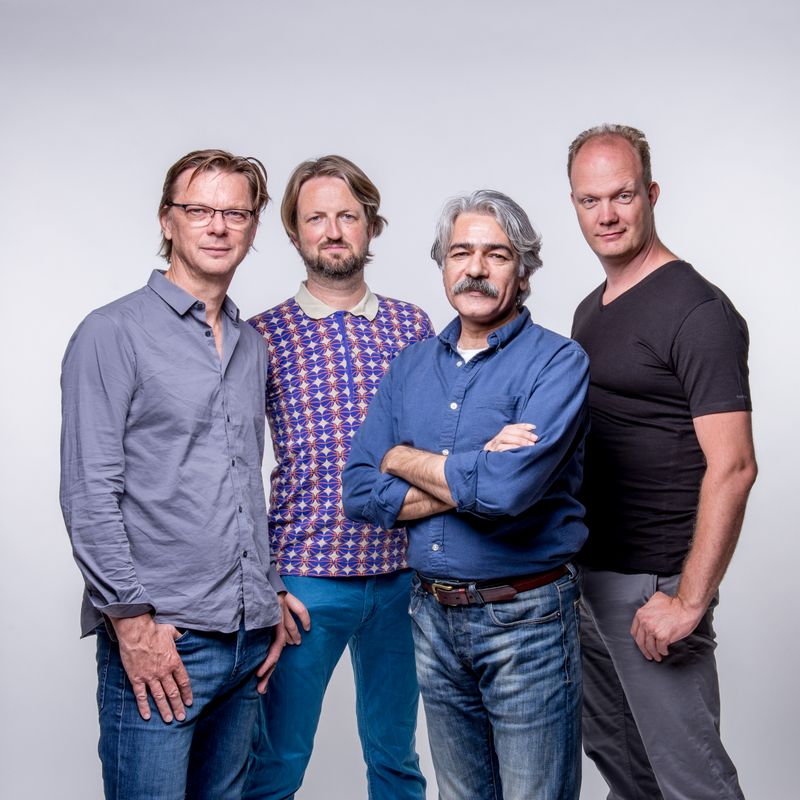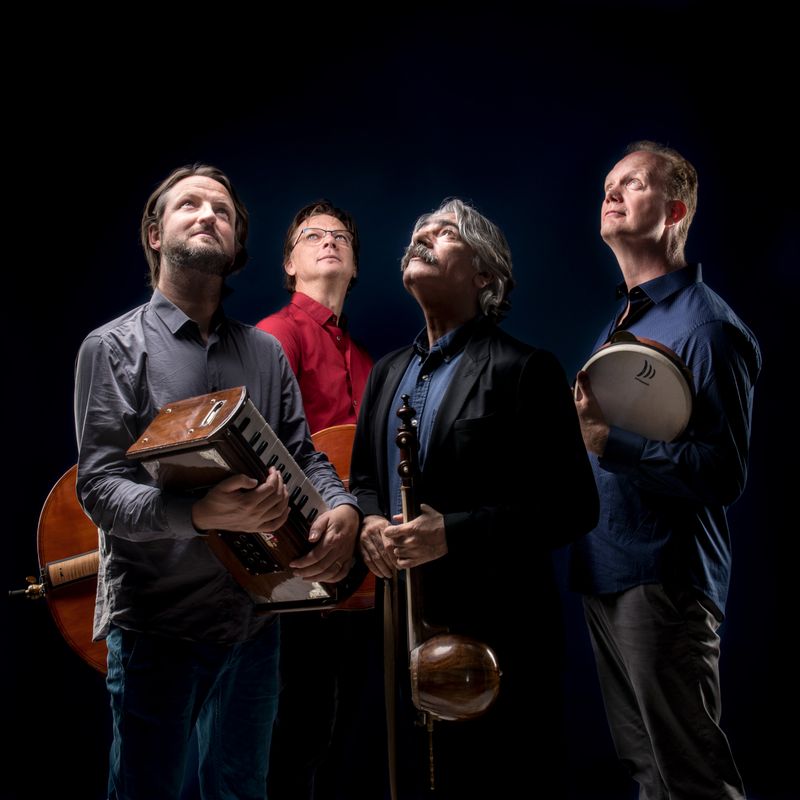Kayhan Kalhor staat internationaal bekend als de voornaamste meester van de kamancheh, de Perzische knieviool. De Iraanse grootheid werkt regelmatig samen met musici uit andere culturen, zoals met de Indiase sitarspeler Shujaat Khan, de Turkse saz-wizard Erdal Erzincan, de Malinese kora-virtuoos Toumani Diabaté en het Amerikaanse strijkkwartet Brooklyn Rider. Zijn project met het Rembrandt Trio is bijzonder intrigerend. Kalhor zegt er zelf over: ‘Je kunt het niet categoriseren, het is geen jazz, geen klassieke muziek, het is gewoon iets dat we doen met onze instrumenten, waarbij alles draait om improvisatie.’
De gekozen instrumenten zijn opmerkelijk. Kalhor speelt de knieviool met een expressief geluid dat recht naar het hart gaat. Rembrandt Frerichs bespeelt een fortepiano naar een model uit 1790, het soort instrument dat Mozart bespeelde. De klank zit tussen een piano en een klavecimbel in. Frerichs zegt: ‘Ik voelde me ertoe aangetrokken omdat het kan klinken als een tar (Iraanse langhals-luit) of een santur (cymbalom). Het instrument heeft veel meer boventonen dan een moderne piano en klinkt daardoor transparanter, wat veel ruimte geeft aan de andere instrumenten.’
Dit concert is uitgezonderd van de Podiumpas
//// ENGLISH ////
Kayhan Kalhor is internationally renowned as the prime master of the kemenche, the Persian spike fiddle. The Iranian performer is also known for his collaborations with musicians from other cultures, such as Indian sitar player Shujaat Khan, Turkish saz wizard Erdal Erzincan, Malinese kora virtuoso Toumani Diabaté, and American string quartet Brooklyn Rider. His project with the Rembrandt Trio is one of his most intriguing ones. Kalhor says: ‘You are not able to categorize it, it’s not jazz, it’s not classical music, it’s just something we do with our instruments and where improvisation is the key.’
The choice of instruments is remarkable. Kalhor plays the the spike fiddle with an expressive sound that moves straight to the heart. Rembrandt Frerichs plays a fortepiano after a model from 1790, the kind of instrument Mozart played. Its sound lies between a piano and a harpsichord. Frerichs says: ‘I was attracted to it because it can sound like a tar (Iranian lute) or a santur (cymbalom). It has more overtones than a modern piano so it sounds more transparent, which gives more space to the other instruments.’
i.s.m. 
This concert is excluded from the Podiumpas






